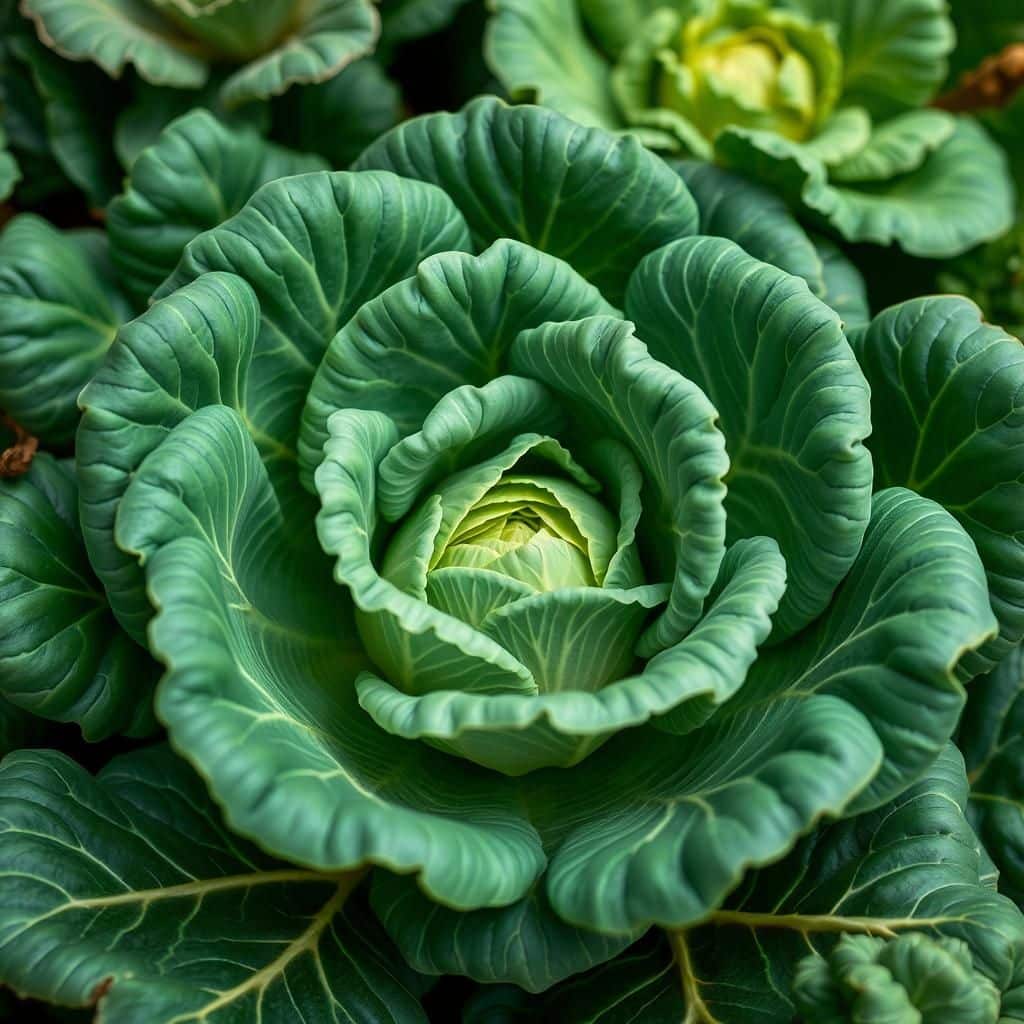Essential Companion Plants for Brassicas: Boost Your Garden's Health and Yield

Companion planting is a time-honored technique that can significantly enhance the health and yield of your garden, particularly for Brassicas, which include popular vegetables like cabbage, broccoli, and kale. By carefully selecting companion plants, gardeners can create a more balanced ecosystem, deter pests, and promote nutrient uptake. This article will explore essential companion plants that thrive alongside Brassicas, detailing their benefits and interactions. Whether you’re a novice gardener or an experienced green thumb, understanding these dynamic partnerships can lead to a flourishing garden and bountiful harvests. Join us as we delve into the essential companions that will elevate your Brassica cultivation.
Companion Plants for Brassicas
Brassicas, which include vegetables like cabbage, broccoli, and kale, benefit significantly from the practice of companion planting. This strategy involves cultivating other plants nearby that can enhance growth, repel pests, and improve flavor. For example, planting strong-smelling herbs such as rosemary or thyme can deter pests like cabbage moths that commonly afflict brassicas. Additionally, legumes like peas can enrich the soil with nitrogen, improving the nutrient content available for brassicas. The right companion plants can not only boost the health of your brassicas but also contribute to a more diverse and flourishing garden ecosystem.
Best Companion Herbs for Brassicas
Herbs such as sage, dill, and cilantro serve as excellent companions for brassicas. These herbs can attract beneficial insects that prey on pests harmful to brassicas, thereby reducing the need for chemical pesticides. Furthermore, the aromatic properties of these herbs can help to mask the smell of brassicas, which can attract unwanted pests. Incorporating these herbs can also enhance the overall flavor profile of your vegetable garden.
Legumes and Brassicas
Planting legumes like peas or beans alongside brassicas is beneficial because they naturally fix nitrogen in the soil. This process enriches the soil and provides essential nutrients that promote the growth of brassicas. As brassicas often require nitrogen-rich soils, the presence of legumes can lead to healthier and more robust plants, ultimately increasing your harvest yield.
Flowers as Companion Plants
Certain flowering plants, such as marigolds and nasturtiums, can serve as protective companions for brassicas. These flowers can attract pollinators while also repelling harmful pests like aphids and whiteflies, which frequently threaten brassica crops. The presence of these flowers can help to create a balance in your garden ecosystem, ensuring that your brassicas receive both pollination and protection.
See also:
Benefits of Companion Planting
The practice of companion planting can significantly enhance the growth of brassicas by promoting biodiversity. This technique not only allows for better use of space in your garden but also reduces the risks associated with pest infestations and soil depletion. Companion plants can improve soil structure and moisture retention, leading to a healthier growing environment for all crops involved.
Common Pests of Brassicas
Brassicas are known to be susceptible to various pests, including cabbage worms, aphids, and flea beetles. Implementing companion plants can help manage these pests effectively. For example, planting row covers or using companion plants like garlic can deter pests, reducing the need for chemical treatments. Understanding the behavior of these pests allows gardeners to create integrated pest management strategies that safeguard brassicas.
| Companion Plant | Benefit |
|---|---|
| Sage | Deters cabbage moths |
| Legumes (Peas/Beans) | Increases nitrogen in the soil |
| Marigolds | Repels aphids and attracts pollinators |
| Nasturtiums | Trap crop for aphids |
| Dill | Attracts beneficial insects |
Understanding the Synergistic Benefits of Companion Planting with Brassicas
Companion planting can significantly enhance the health and productivity of Brassicas, such as cabbage and broccoli. By strategically pairing these plants with compatible companions, gardeners can create a more balanced ecosystem in their gardens. For instance, planting herbs like dill or cilantro can attract beneficial insects that help control pests, while flowers such as marigolds may deter harmful pests and enhance soil quality. Furthermore, certain root systems can help loosen the soil, improving the nutrient uptake of nearby Brassicas. Through thoughtful companion planting, gardeners can not only increase the yield of their crops but also foster a healthier overall garden environment.
Best Companion Herbs for Brassicas
Herbs like dill, thyme, and cilantro make excellent companions for Brassicas. These herbs attract pollinators and predatory insects that can help control common pest populations, such as aphids and caterpillars. Dill, in particular, is known for attracting beneficial wasps that lay eggs in pests, decreasing their numbers naturally. Furthermore, many herbs have natural properties that can enhance the flavor of their companion plants, making for a more appealing harvest. By incorporating these herbs into your Brassica plantings, you can create a more vibrant and productive garden.
Companion Flowers That Benefit Brassicas
Choosing the right flowers, such as marigolds and nasturtiums, can provide dual benefits when planted alongside Brassicas. Marigolds are renowned for their pest-repelling properties, particularly against nematodes and aphids, ensuring that your Brassicas remain healthier and more robust. Nasturtiums serve as a trap crop for aphids, drawing them away from your Brassicas and minimizing damage. Additionally, both types of flowers add beauty to your garden, enhancing the aesthetic appeal while promoting biodiversity.
See also:
Utilizing Nitrogen-Fixing Plants with Brassicas
Incorporating nitrogen-fixing plants such as clover or peas alongside your Brassicas can significantly boost soil fertility. These plants have a unique ability to convert atmospheric nitrogen into forms accessible to other plants, enriching the soil as they grow. When the nitrogen levels in the soil are increased, it promotes lush green growth in Brassicas, resulting in stronger and more productive crops. Moreover, these plants improve soil structure and encourage healthier root development, further enhancing the overall garden ecosystem.
Root Companions for Enhanced Soil Structure
Planting deep-rooted companions like carrots or beets alongside Brassicas can have advantageous effects on soil structure. These plants break up compacted soil with their taproots, allowing for better water infiltration and nutrient availability. In turn, the Brassicas benefit from improved access to vital nutrients and moisture, leading to healthier growth and increased yield. This practice not only maximizes space in your garden but also contributes to a more resilient garden ecosystem.
Pest Management through Companion Planting
Effective pest management can be achieved through careful selection of companion plants for your Brassicas. For instance, planting garlic or onions can release natural compounds that deter pests like aphids and cabbage moths. Additionally, the scent of these alliums can confuse and repel harmful insects, reducing the need for chemical pest control. By implementing companion planting strategies focused on natural pest deterrence, gardeners can achieve healthier Brassicas while promoting an environmentally sustainable gardening approach.
Questions from Our Readers
What are companion plants for brassicas?
Companion plants for brassicas are plants that grow well alongside brassicas like cabbage, broccoli, and cauliflower, helping to enhance their growth, improve pest control, and boost nutrient availability. Common companion plants include herbs like dill and cilantro, as well as flowers such as marigolds which can attract beneficial insects.
Why should I use companion planting with brassicas?
Using companion planting with brassicas can lead to healthier plants and higher yields. By planting companions, you can naturally repel pests, improve pollination, and even enhance the flavor of the brassicas. Each plant can benefit from the synergistic relationships established in the garden.
See also:
What plants should I avoid planting near brassicas?
When gardening with brassicas, it's advisable to avoid planting members of the nightshade family (like tomatoes and potatoes) and plants that attract pests such as cabbage moths. These plants can compete for nutrients and may attract harmful insects that jeopardize the health of your brassicas.
How do companion plants benefit brassica growth?
Companion plants benefit brassica growth by providing shade, improving soil quality, and attracting pollinators or predatory insects that control pests. For example, some companion herbs can repel aphids, while others can help fix nitrogen in the soil, leading to more robust brassica plants.

If you want to read more articles like Essential Companion Plants for Brassicas: Boost Your Garden's Health and Yield, we recommend you check out our Gardeners category.
Leave a Reply
Related Articles